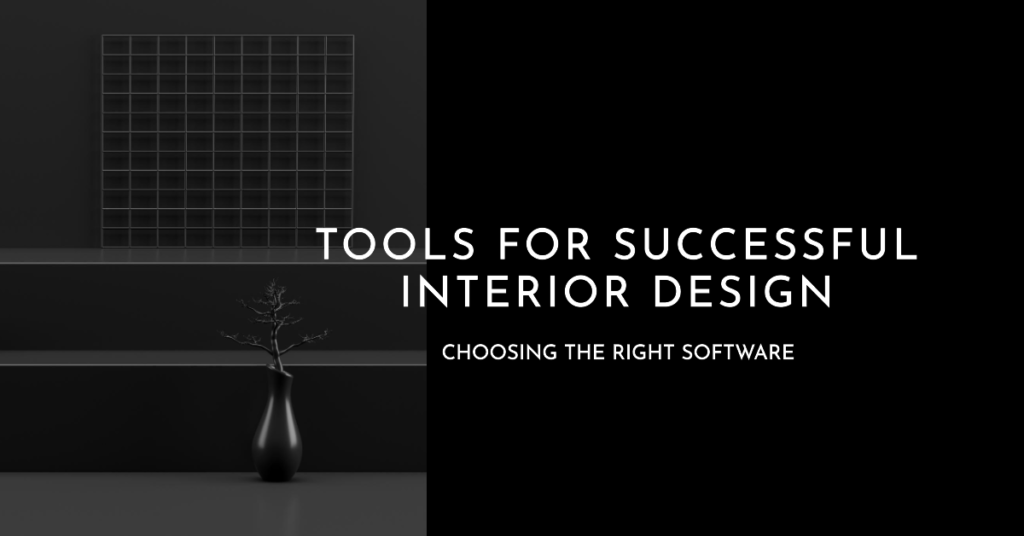
Table of Contents
Introduction:
In today’s digital age, interior design has transcended beyond mere sketches and physical models. With the advent of advanced software tools, designers now have a plethora of options at their fingertips to bring their visions to life in stunning detail. However, with so many choices available, selecting the right interior design software can be a daunting task. Fear not! This comprehensive guide will navigate you through the labyrinth of options, helping you choose the perfect tool for your design endeavors.
Understanding Your Needs: The Foundation of Software Selection
Before diving into the vast ocean of interior design software, it’s crucial to assess your specific needs and requirements. Are you an amateur designer looking to dabble in home projects, or a seasoned professional working on large-scale commercial ventures? Understanding the scope and scale of your projects will greatly influence the type of software that best suits your needs.
Furthermore, consider your preferred design style and workflow. Are you more inclined towards traditional or contemporary designs? Do you prefer a streamlined, minimalist interface, or do you thrive on the versatility of complex tools? By establishing a clear understanding of your objectives, you can narrow down your options and focus on software solutions tailored to your unique preferences.
Exploring the Landscape: A Survey of Interior Design Software
With a myriad of interior design software available in the market, it’s essential to conduct thorough research to identify the most suitable options. From industry giants to emerging innovators, each software offers its own set of features, capabilities, and pricing models.
Among the leading contenders in the industry are Autodesk’s AutoCAD, renowned for its robust 3D modeling capabilities and architectural precision, and SketchUp, praised for its intuitive interface and extensive library of user-generated content. Meanwhile, newcomers like Foyr Neo and RoomSketcher have gained traction for their user-friendly interfaces and affordable pricing plans, making them attractive options for both beginners and professionals alike.
Feature Focus: Key Considerations When Evaluating Software
As you delve deeper into the realm of interior design software, it’s essential to prioritize features that align with your specific needs and workflow. While some designers may prioritize advanced rendering capabilities for photorealistic visualizations, others may require robust collaboration tools for seamless team communication and project management.
Additionally, consider the scalability of the software and its compatibility with your existing tools and technologies. Is the software capable of handling large-scale projects without compromising performance? Does it support integration with industry-standard file formats, such as DWG or OBJ? By evaluating these factors, you can ensure that the software not only meets your current needs but also scales with your evolving requirements.


User Experience Matters: The Importance of Intuitive Design
In the fast-paced world of interior design, efficiency is key. A software solution may boast a wide array of features, but if its interface is clunky and unintuitive, it can hinder rather than enhance your creative process. When evaluating interior design software, prioritize user experience and interface design, opting for tools that streamline your workflow and minimize learning curves.
Look for software that offers customizable interfaces and shortcuts, allowing you to tailor the user experience to your preferences and optimize productivity. Additionally, consider the availability of comprehensive tutorials, documentation, and customer support channels to ensure a smooth onboarding process and ongoing assistance when needed.
Budget Considerations: Finding the Balance Between Cost and Value
While investing in quality interior design software is essential for unleashing your creativity and maximizing efficiency, it’s equally important to strike a balance between cost and value. Before committing to a purchase, carefully evaluate the pricing plans and subscription models offered by various software providers, taking into account factors such as licensing fees, renewal costs, and additional charges for premium features.
Keep in mind that while some software solutions may have higher upfront costs, they may offer greater long-term value through enhanced features, performance, and support services. Conversely, opting for budget-friendly alternatives may suffice for smaller projects or entry-level users but may lack the scalability and advanced capabilities required for larger endeavors.
Trial and Error: Harnessing the Power of Free Trials and Demos
With so much at stake, making an informed decision about interior design software requires hands-on experience. Fortunately, many software providers offer free trials, demos, or limited versions of their products, allowing you to test drive the software and evaluate its suitability before making a commitment.
During the trial period, take the opportunity to explore the software’s features, experiment with different design scenarios, and assess its performance and usability. Solicit feedback from colleagues, mentors, or online communities to gain valuable insights and perspectives on the software’s strengths and limitations. By leveraging trial and error, you can make a well-informed decision that aligns with your design aspirations.
Community Support and Resources: Tapping Into a Wealth of Knowledge
In the ever-evolving landscape of interior design software, community support and resources play a pivotal role in empowering designers to overcome challenges, share insights, and unlock new opportunities for growth and innovation. Whether through online forums, social media groups, or dedicated user communities, tapping into a network of like-minded individuals can provide invaluable guidance, inspiration, and camaraderie.
Furthermore, many software providers offer extensive libraries of tutorials, webinars, and educational resources to help users master their tools and unleash their creative potential. Take advantage of these resources to deepen your understanding of the software’s capabilities, refine your skills, and stay abreast of the latest trends and techniques in the industry.
Future-Proofing Your Investment: Adapting to Emerging Trends and Technologies
In an industry as dynamic as interior design, staying ahead of the curve is essential for maintaining a competitive edge. As you evaluate interior design software options, consider not only their current features and capabilities but also their roadmap for future development and innovation.
Look for software providers that demonstrate a commitment to staying abreast of emerging trends and technologies, such as virtual reality (VR), augmented reality (AR), and artificial intelligence (AI). By future-proofing your investment and aligning with forward-thinking software solutions, you can ensure that your design toolkit remains relevant and resilient in the face of evolving demands and opportunities.
Making the Decision: A Leap Towards Design Excellence
After careful deliberation and evaluation, the time has come to make a decision. Armed with insights, knowledge, and a clear understanding of your needs, confidently select the interior design software that best aligns with your vision, goals, and aspirations. Whether you opt for a powerhouse solution with advanced features or a user-friendly tool tailored to beginners, remember that the ultimate goal is to unleash your creativity, elevate your designs, and embark on a journey of endless possibilities.
Conclusion:
In conclusion, choosing the right interior design software is a pivotal step towards realizing your creative vision and achieving design excellence. By understanding your needs, exploring the landscape of available options, prioritizing key features, and leveraging trial and error, you can navigate the digital realm of interior design with confidence and clarity. Embrace the journey, embrace the possibilities, and let your imagination soar as you embark on a transformative design odyssey.



